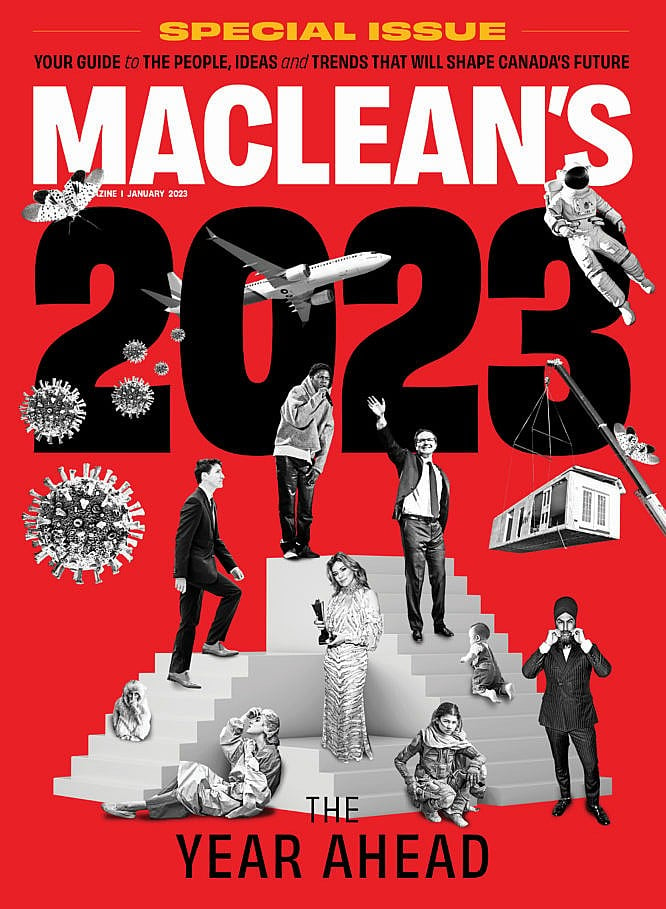My Prediction: More than 465,000 people will move to Canada in 2023. We aren’t ready.
We need to leverage our skilled workers if we’re going to avoid a labour crisis

(Photo courtesy Banerjee)
Share
Rupa Banerjee is the Canada Research Chair in economic inclusion, employment and entrepreneurship of Canada’s immigrants
Canada could be heading toward a population crisis. We’re getting older. Our birth rates are too low—10.15 per 1,000 people in 2022—and declining every year. We simply don’t have the taxpayer base to sustain our aging population or the workers to fill gaps across the labour market. In March of last year, job vacancies rose to record levels, with more than a million open positions across the country. We need people, not just in tech and health care, but across the economy.
Fortunately, unlike countries such as Australia, New Zealand and the United States—which largely closed up their immigration systems during COVID and haven’t opened them back up again—Canada has done the opposite. We are now looking at upward of 465,000 immigrants coming in 2023, compared to around 350,000 the year before the pandemic.
It’s great that the numbers are high, but the current system doesn’t adequately support the people coming in—and we don’t prioritize the types of workers we need. How are we going to sustain our target immigration numbers and incorporate all these people into the labour market? Canada needs skilled workers badly—already, hospitals have resorted to closing their ERs, and there is a backlog in the construction industry. If we don’t get this right, we’ll see a long-term ripple effect on the health of our people and our economy.
Our two-step immigration system has not fixed the problem. Skilled migration in Canada used to be a one-step model—immigrants were assessed on a points system and then offered permanent residence before arrival. Now we rely primarily on a multi-step process, in which most people come either as international students or temporary foreign workers, and then have the opportunity to apply for permanent resident status after working or studying here for a period of time.
The new system favours people in certain occupational fields, particularly tech and finance. If you need a licence to work, as you do in health care and many of the skilled trades, it’s much harder to come in through the two-step system because it’s difficult and often impossible to complete the licensure process from abroad.
Meanwhile, in any given month, we admit twice as many temporary workers into the country as we do permanent residents. Of those temporary workers, the ones who hold highly skilled jobs have more pathways to permanent residence than the ones who are here to do so-called “lower-skilled jobs”—in agriculture, the service sector and even parts of the care sector. This huge growth in temporary workers can erode labour-market conditions for Canadian workers. There’s no incentive for employers to improve wages or training because they can simply turn to vulnerable temporary foreign workers. The temporary workers become just that: a temporary solution to our labour crisis.
One solution is more input from the provinces. For example, health care is a provincial mandate; it might help to give the provinces control over immigration for health-care workers, rather than keeping it at the federal level. Immigration ministers in multiple provinces, including Saskatchewan, Ontario, Manitoba and Alberta, have asked for greater autonomy over their respective systems. Their requests are being considered, and a revised provincial plan should be approved this coming spring.
The provinces are also trying new and better ways to integrate skilled immigrants. One example is British Columbia’s Facilitating Access to Skilled Talent program, which was created to fast-track the licensing process for skilled trades. It’s been so successful—67 per cent of participants land jobs within four weeks—that the province has expanded it to immigrants with backgrounds in IT, biotech and life sciences.
We have massive backlogs of immigration applications due to troubles that were brewing long before the pandemic—a lack of staff, technology that doesn’t work properly and an opaque process, which means people waste time resending documents because they made an error the first time. The federal government has promised to put more resources into processing applications this year. The consequences of not getting it right are dire.
—As told to Liza Agrba
This article appears in print in the December 2022 issue of Maclean’s magazine. Buy the issue for $9.99 or better yet, subscribe to the monthly print magazine for just $39.99.
